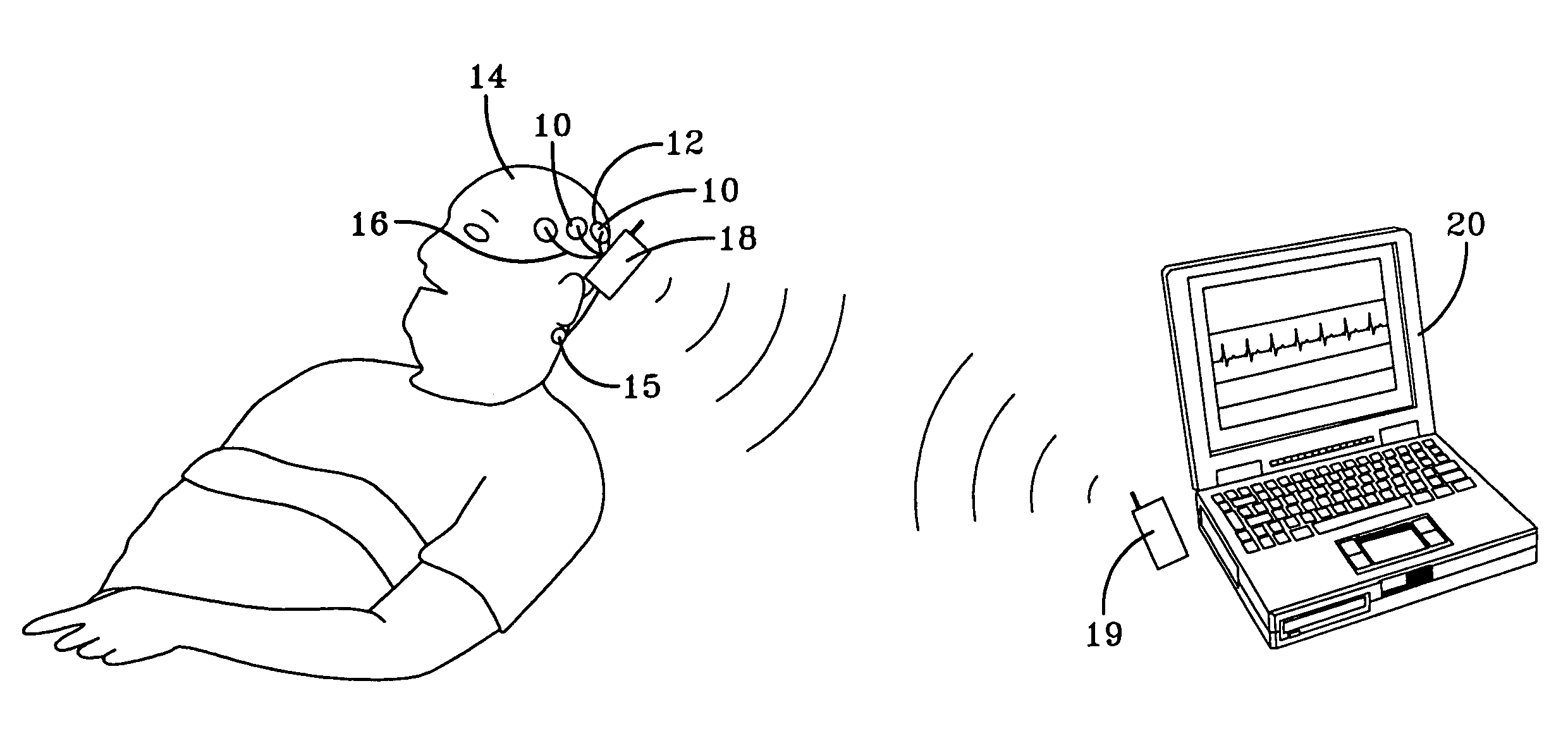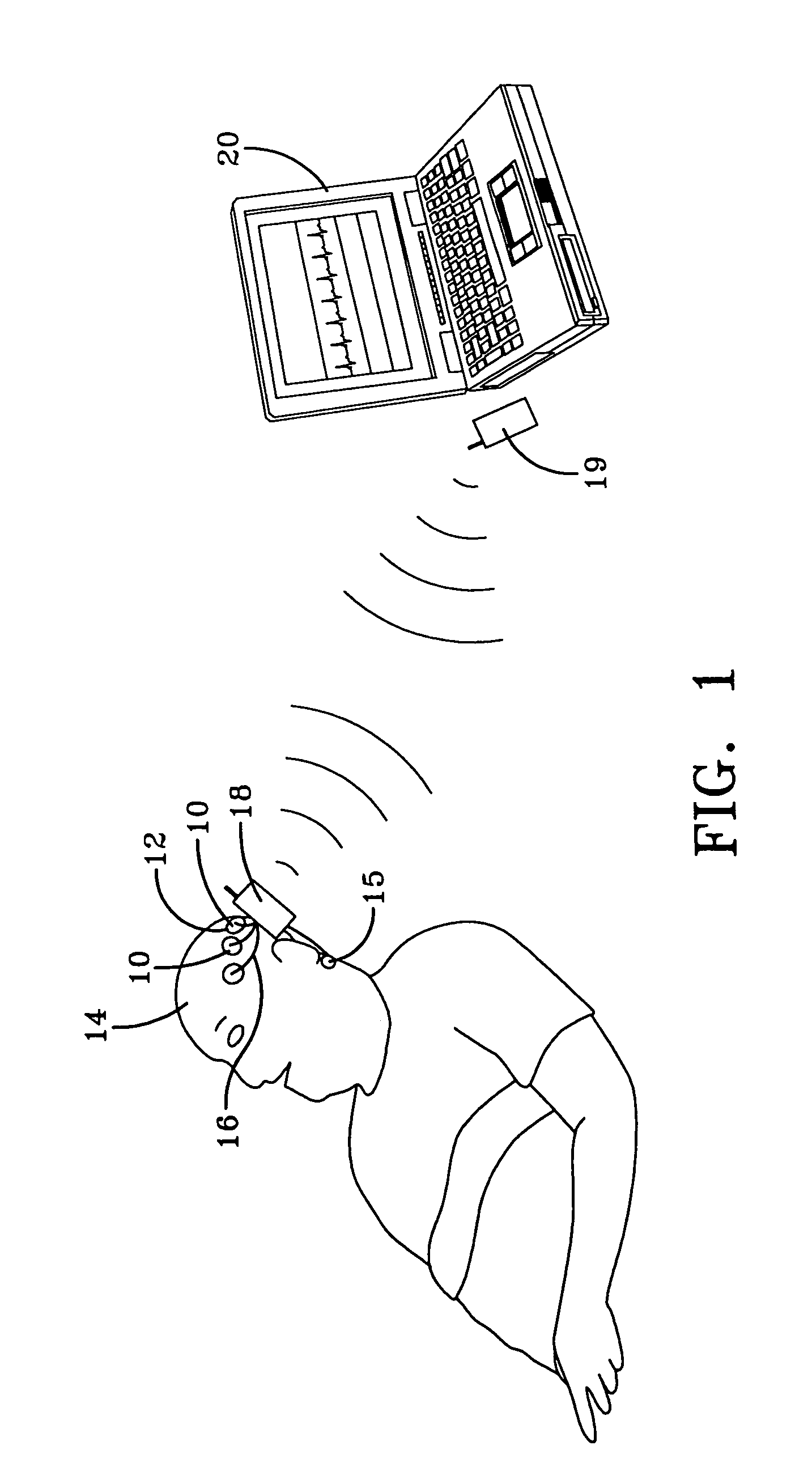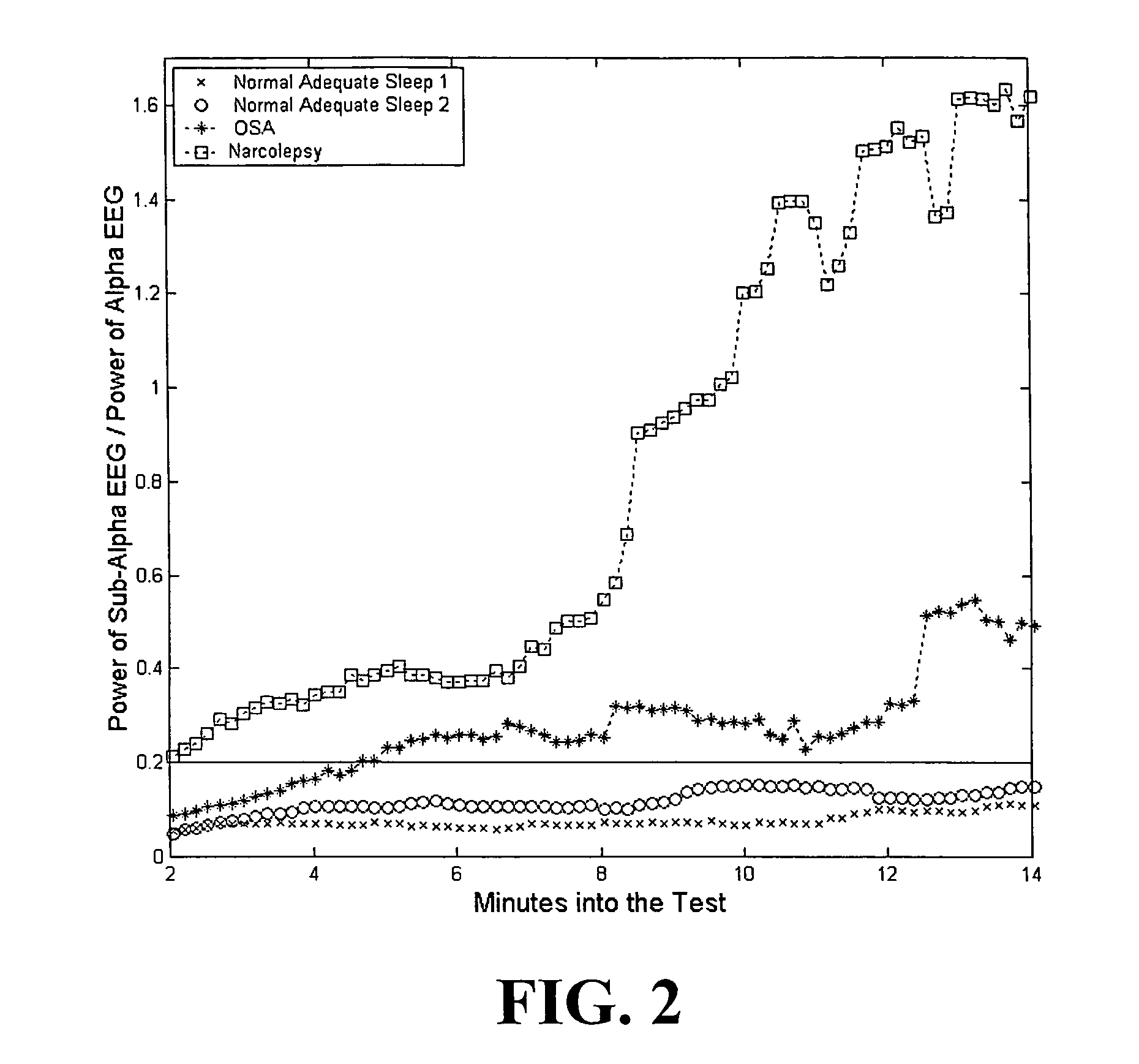Quantitative method for the therapeutic treatment of sleep disorders
a sleep disorder and quantitative technology, applied in the field of quantitative methods for the treatment of sleep disorders, can solve the problems of morbidity and mortality, deterioration of life quality, and the cost of sleep deprivation and its associated medical and social costs, which exceed $150 billion dollars per year, and achieves time saving, cost saving, and more acceptability.
- Summary
- Abstract
- Description
- Claims
- Application Information
AI Technical Summary
Benefits of technology
Problems solved by technology
Method used
Image
Examples
Embodiment Construction
ed to provide an overview or framework for understanding the nature and character of the invention as it is claimed. The accompanying drawings are included to provide a further understanding of the invention, and are incorporated in and constitute a part of this specification. The drawings illustrate various embodiments of the invention, and together with the description serve to explain the principles and operation of the invention.
BRIEF DESCRIPTION OF THE DRAWINGS
[0025]FIG. 1. is an illustration of a subject wearing a sensor to pickup and transmit brain wave signals to a computer for quantitatively analyzing the subject for excessive daytime sleepiness and / or sleep disorders.
[0026]FIG. 2. is a graph showing a comparison of a number of subjects' profiles with a threshold profile to determine whether the subjects suffer from a sleeping disorder.
[0027]FIG. 3. is another graph showing a comparison of the a number of subjects' cumulative profiles with a threshold cumulative profile to ...
PUM
 Login to View More
Login to View More Abstract
Description
Claims
Application Information
 Login to View More
Login to View More - R&D
- Intellectual Property
- Life Sciences
- Materials
- Tech Scout
- Unparalleled Data Quality
- Higher Quality Content
- 60% Fewer Hallucinations
Browse by: Latest US Patents, China's latest patents, Technical Efficacy Thesaurus, Application Domain, Technology Topic, Popular Technical Reports.
© 2025 PatSnap. All rights reserved.Legal|Privacy policy|Modern Slavery Act Transparency Statement|Sitemap|About US| Contact US: help@patsnap.com



